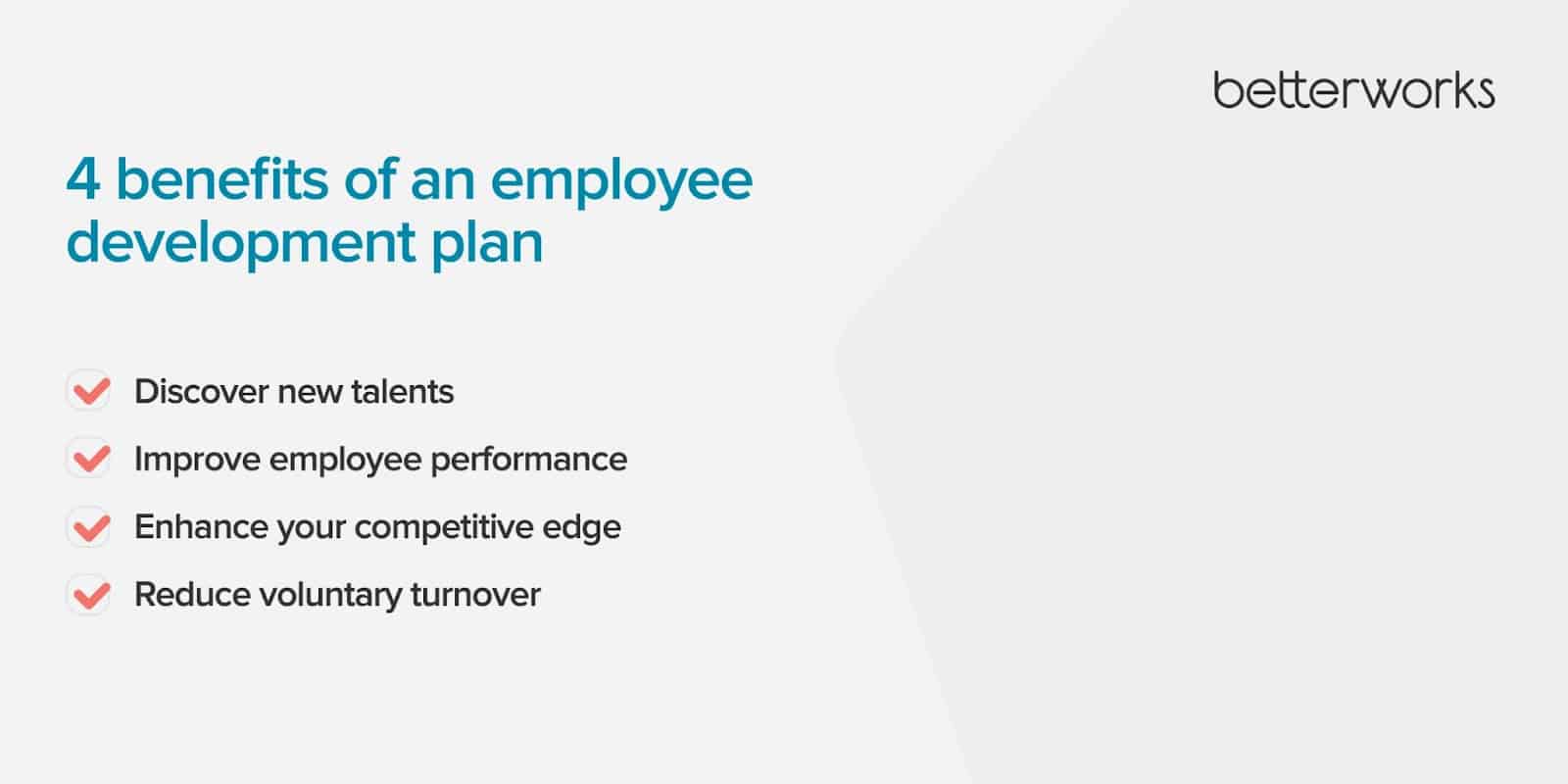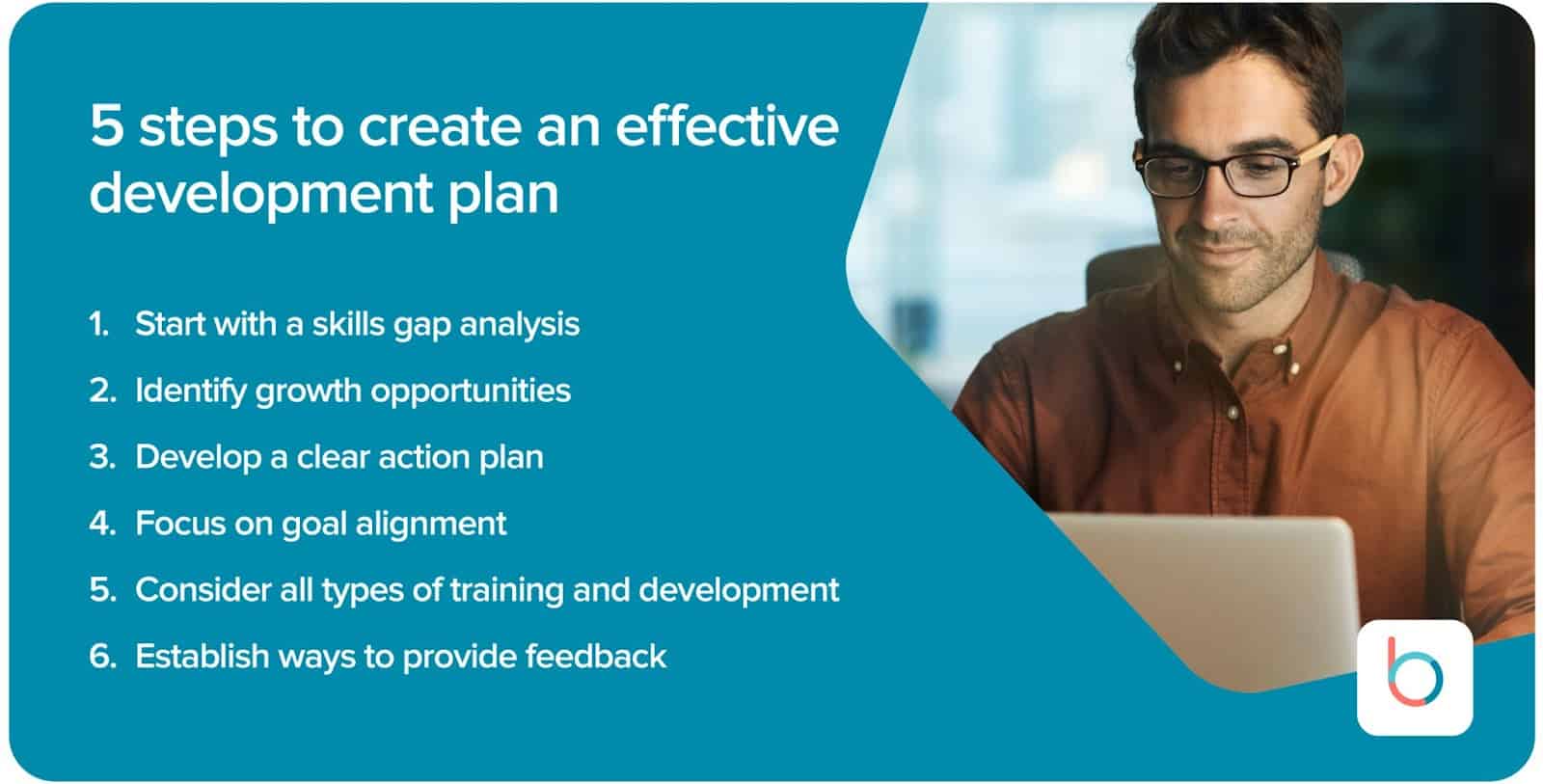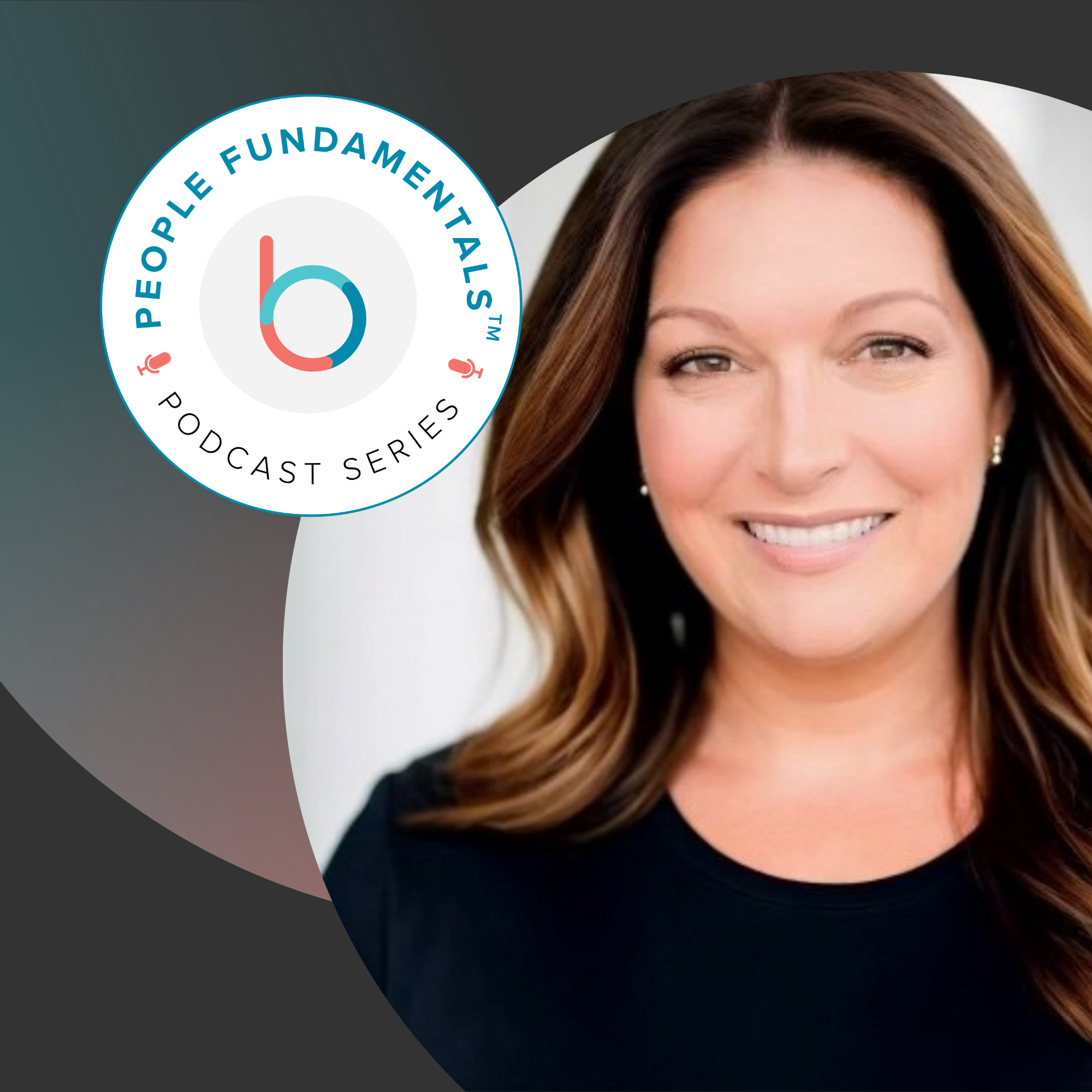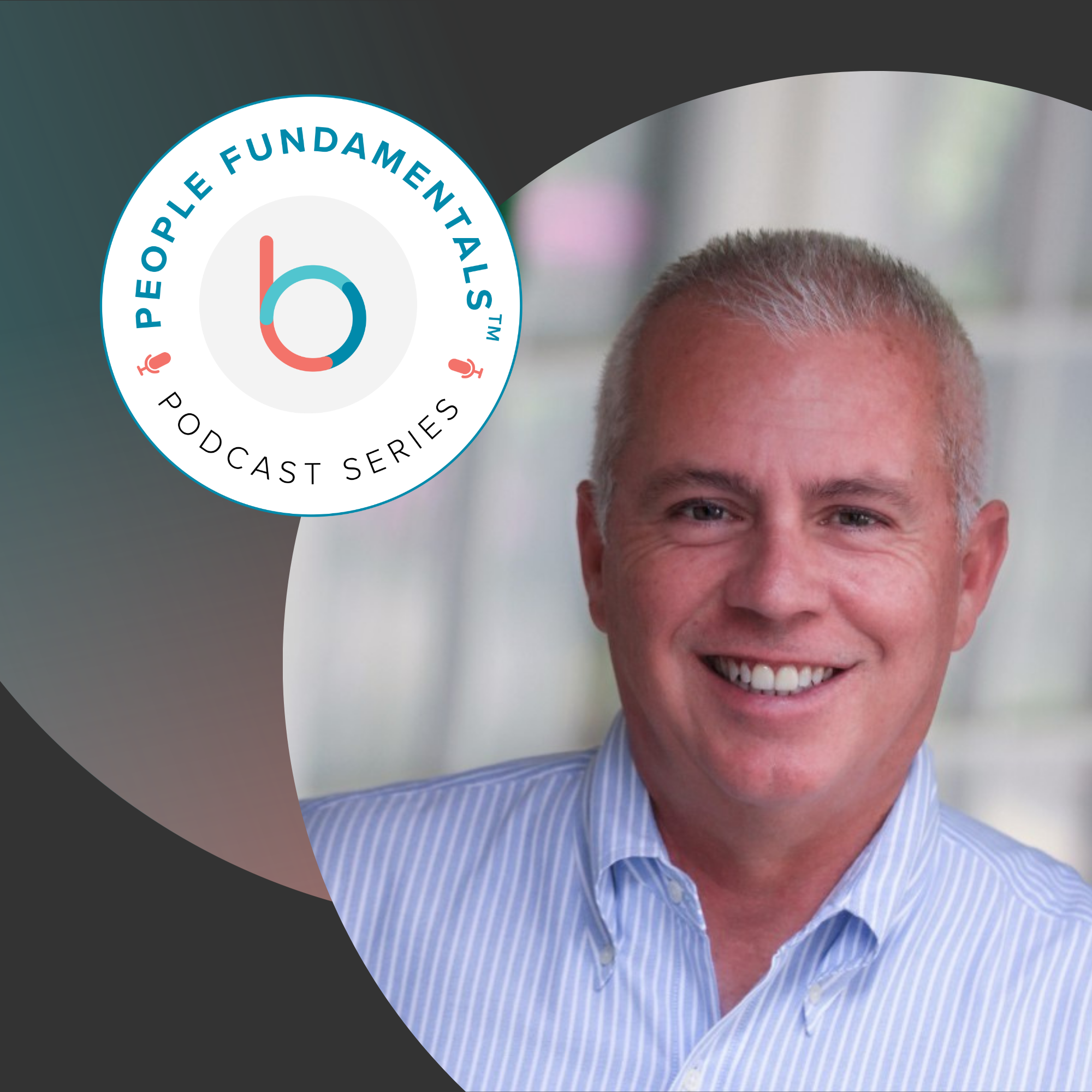Your workforce can give you a competitive edge — but only if you can develop the skills, abilities, and strengths your people need to move the business forward. To make that happen, you need a comprehensive people development plan.
Your HR team probably doesn’t have time to help each employee write an effective individual people development plan. Without a structured process in place, your managers may not be able to fill that gap, either. That’s why creating the perfect employee development plan depends on a consistent, templated process that managers can easily implement to determine the right direction for employee growth.
Let’s explore what effective people development plans can do for your business and how to implement them.
What is a people development plan?
A people development plan (also known as an employee development or professional development plan) provides direction and focus to help individual employees achieve their long term professional and career goals. People development plans gather, in one easy-to-read document, all of the components an employee needs to move their career forward.
People development plans are similar to career development plans, but they take a larger scope. Career development plans are tightly focused on the employee’s trajectory within their current organization. But people development plans set the stage for professional and personal development that employees can also use outside the organization.
With a people development plan in place, employees can find both their personal strengths and their professional calling. Although people development plans could extend beyond an employee’s tenure with your business, cultivating employee growth within your organization encourages employees to remain there, where they’re highly valued.
4 benefits of an employee development plan
Effective people development planning produces positive results for employees and the business.
Discover new talents
Following an employee development plan can help team members discover talents and skills they didn’t know they had.
When creating an employee development plan, team members gain exposure to different areas of the business. Part of their development could include picking up projects in different departments, which encourages them to try new things and learn new skills. Opportunities to exercise lesser-used skills can help employees understand what tasks they’re best at and most enjoy.
When viewed cumulatively, people development plans help you discover workforce strengths that can influence your organizational talent strategy.
As employees and managers track their development plans, the data tells the story of your organization’s hidden talents. Your HR team can use this data to assess the workforce’s bench strength, inventory the skill sets and abilities being developed by team members, and view where those skills exist within the business. You can use that information to develop succession plans and support other long-term business goals.
Improve employee performance
One of the strongest outcomes of effective people development planning is improved employee performance.
As employees develop their skills and work toward their goals, they gain skills, abilities, and experiences they can apply to their current work. An enriched skill set enables employees to perform better, producing better outcomes. Additionally, the opportunity to exercise new skills can keep employees interested and engaged in their daily routines.
A successful talent strategy depends on optimizing performance so the business can get where it needs to go faster and at a lower cost.
Enhance your competitive edge
People development plans take a broad to development, including both professional and personal development. Helping employees develop themselves — as lifelong learners, better communicators, or becoming more self-aware, for example — has far-reaching benefits. People development plans can help existing employees develop the skills, abilities, and knowledge needed to move into new roles in other parts of the business.
Employees who are committed to a development plan are always growing, and that can give your business a competitive advantage. You’ll be able to develop a workforce that is agile enough to adapt to sudden developments and is resilient in the face of change. The ability to pivot can help you navigate disruptions that might derail other businesses.
Reduce voluntary turnover
A robust employee development program creates a culture of learning, where employees are curious and always acquiring knowledge. Channeling that sense of growth into an employee development plan can provide a sense of direction and keep employees engaged in their work. When employees can see where they can grow within the company, they’re less likely to leave.
People development plans give the workforce greater visibility into their growth options. The process of writing out such plans can help employees and managers engage in future-oriented performance conversations and identify development opportunities.
When employees feel more valued for their contributions, you’ll see increases in employee satisfaction and loyalty.

How do you create an effective development plan?
The results of people development can only be as effective as your development plan is actionable. Done well, HR, managers, and employees can use this collaborative process to revolutionize the workforce.
Start with a skills gap analysis
Before you can set a direction for growth, you have to determine where growth is most needed. For each employee, conduct a skills gap analysis to see what areas they need to improve before they can reach their full potential.
In large organizations, it’s unlikely that HR can assess each team member individually. Train managers to collaborate with employees to identify skills gaps. Equip managers with talent assessments and other tools that can provide insight into each employee’s strengths and opportunities.
Employees should have a voice in the process because they have the best sense of where they struggle the most in the course of work. And because these discussions can be sensitive and personal, it’s helpful if the employee is first to raise concerns about their skills gaps. Train managers to have employee-led conversations around this topic.
Identify growth opportunities
Where there are gaps, there are also opportunities to grow. As employees identify skills gaps, help them determine what they want their employee development plan to target. Prioritize one or two growth opportunities to work toward in the upcoming quarter.
Ask employees about their preferences for growth opportunities. They might line up with the chance to take a temporary role in another department or to take on added responsibility on their team.
Managers can offer direction to help employees determine their focus areas, such as by offering input based on observations of the employee’s performance.
Develop a clear action plan
One of the most important pieces of an employee development plan is setting clear tasks to accomplish. Vague goals don’t empower employees to act. Employees need to know exactly what steps will take them where they want to go.
Help employees with drafting an action plan. Action items within this plan might include taking a course, obtaining a certification or demonstrating mastery of skills in the flow of work through completing a specific task or activity.
Focus on goal alignment
The beauty of an employee development plan is that the impact of the plan resonates across the workforce. As managers and employees explore options for employee growth, make sure that business goals are front and center.
Employees should be able to draw connections between the steps they’re taking and the effects on the business. Employees who have visibility into broader business goals can understand whether their development fits, draw inspiration from those goals and align their personal goals with the business’s trajectory.
Managers play an important role in interpreting these business goals and helping employees see what steps they can take to create the most impact.
Consider all types of training and development
Don’t limit your idea of what makes an effective training program. Your business houses hundreds of learning opportunities, big and small, formal and informal. Help managers and employees understand the wealth of learning resources available to them.
Armed with this information, managers can more effectively help employees find which ones work best for them. On-the-job learning, for instance, is a powerful tool for teaching concepts and helping employees apply them in real situations. Team members who are kinesthetic learners, who learn by doing, may realize their best results from on-the-job learning.
Establish ways to provide feedback
Ongoing feedback is crucial to the success of any employee development plan. Feedback from managers can help employees gauge whether they’re on track or need to reassess the goal.
Managers need tools that enable them to deliver feedback in real time and track those conversations for future reference. Certain communication tools, such as your project management platform, can facilitate these conversations. Look for feedback and communication tools that can integrate with existing systems and software.
 Employee development plan template
Employee development plan template
In addition to training managers to collaborate with employees on their development plans, a written template can also help guide your planning process. These components are essential to include in your employee development plan template.
Long-term vision
Each employee’s long-term vision for their career is the bedrock of their development plan. Each employee should have a clear sense of where they want to go as a professional, even if that vision is subject to change. Managers can help draw out this long-term outlook by asking employees about the work they enjoy most or where they see themselves progressing within the company.
Short-term objectives
Employees can also collaborate with managers to develop short-term objectives. These should be goals that the employee can accomplish within a set time frame. They should feed into the long-term vision and support the overall growth of the business and the employee alike.
Key results
Key results are specific outcomes that indicate the employee has met their short-term objectives. Key results should be measurable and clearly indicate what the employee has accomplished. If an employee’s objective is to gain traction as a thought leader, for example, then landing a public speaking engagement could be considered a key result related to that objective.
Learning resources
When creating their development plan, employees should have a list of learning resources to draw on. The list might include suggested courses or documented opportunities to accept gigs in other parts of the organization. Managers should be able to guide employees to learning opportunities that are most meaningful and useful to them. Keep this list updated regularly so that employees understand all of their learning options.
Drive your talent strategy through people development
People development planning is a crucial piece of an effective talent strategy. To succeed, every manager and employee must have the necessary tools and resources to embrace professional development.
To take advantage of the many benefits of people development planning, you need a process and a template the workforce can easily apply to their professional development journey. With your workforce always learning and growing, your business can continue to grow and thrive.






